Sovereign state United Kingdom Postcode district W1D Dialling code 020 | ||
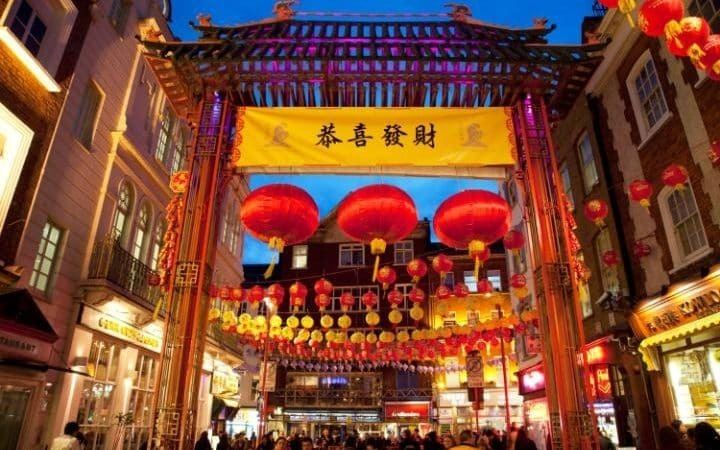 | ||
Similar | ||
Walking around downtown chinatown london on a hot sunny summers day friday 4th july 2014
The name Chinatown has been used at different times to describe different places in London. The present Chinatown is part of the City of Westminster, occupying the area in and around Gerrard Street. It contains a number of Chinese restaurants, bakeries, supermarkets, souvenir shops, and other Chinese-run businesses.
Contents
- Walking around downtown chinatown london on a hot sunny summers day friday 4th july 2014
- History
- Residents
- Gerrard Street
- Education
- Transport
- References
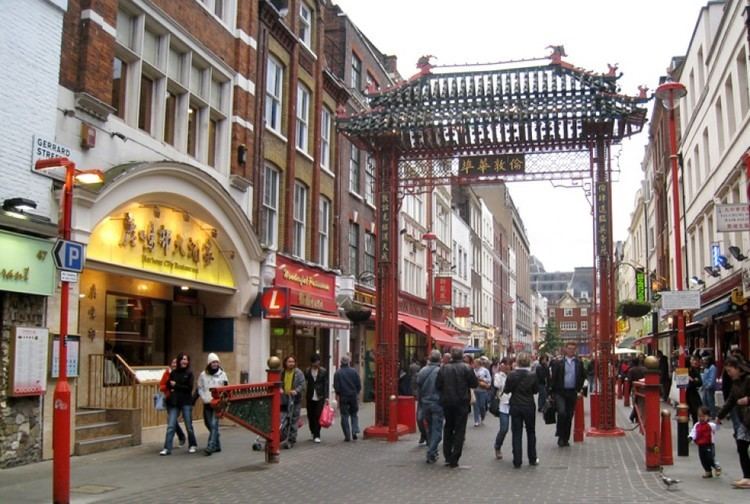
History
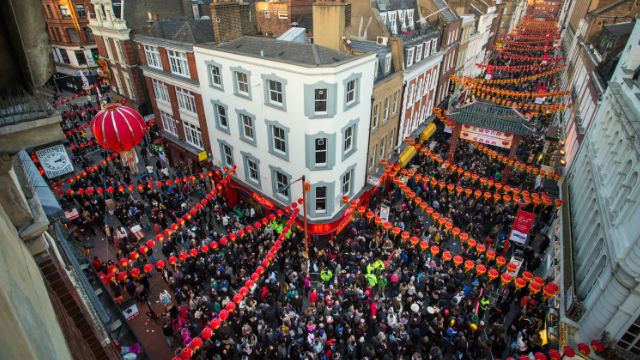
The first area in London known as Chinatown was located in the Limehouse area of the East End of London. At the start of the 20th century, the Chinese population of London was concentrated in that area, setting up businesses which catered to the Chinese sailors who frequented in Docklands. The area began to become known through exaggerated reports and tales of (the then-legal) opium dens and slum housing, rather than the Chinese restaurants and supermarkets in the current Chinatown. However, much of the area was damaged by aerial bombing during the Blitz in World War II, although a number of elderly Chinese still choose to live in this area. After World War II, however, the growing popularity of Chinese cuisine and an influx of immigrants from Hong Kong led to an increasing number of Chinese restaurants being opened elsewhere.
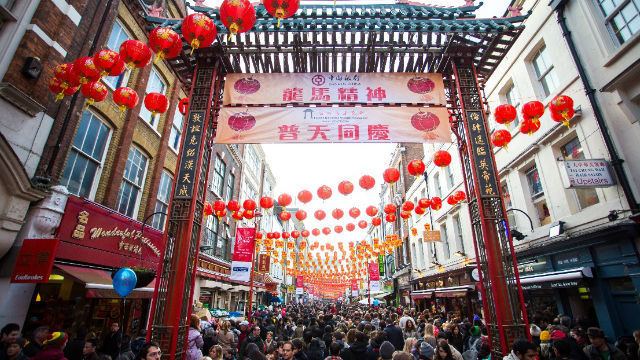
The present Chinatown, which is off Shaftesbury Avenue did not start to be established until the 1970s. Up until then, it was a regular Soho area, run-down, with Gerrard Street the main thoroughfare. It was dominated by the Post Office, facing Macclesfield Street, and other major establishments were The Tailor & Cutter House, at 43/44, now a Chinese supermarket and restaurant, the Boulougne Restaurant, near the Wardour Street end, and by Peter Mario's Restaurant at the other end. Other businesses included a master baker's, the Sari Centre, Lesgrain French Coffee House, Harrison Marks' Glamour Studio, an Indian restaurant and various brothels. Probably the first Chinese restaurants opened in Lisle Street, parallel to Gerrard St, and then spread gradually. The Tailor & Cutter did not close down until around 1974.
The area boasts over 80 restaurants showcasing some of London's finest and most authentic Asian cuisine.

In 2005, the property developer Rosewheel proposed a plan to redevelop the eastern part of Chinatown. The plan was opposed by many of the existing retailers in Chinatown, as they believe that the redevelopment will drive out the traditional Chinese retail stores from the area and change the ethnic characteristic of Chinatown.

The London Chinatown Community Centre (LCCC) has been housed in the Chinatown area since it was founded in 1980 by Dr Abraham Lue. The Centre claims to have received 40,000 people for help and assistance since its foundation. Located since 1998 on the 2nd floor of 28-29 Gerrard Street, the Centre relocated to 2 Leicester Court in 2012, above the Hippodrome Casino.
Residents
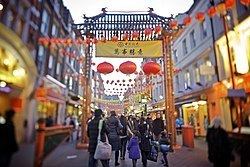
Vale Royal House, a large residential block, houses a number of families, professionals and single men and women. The block was built in the 1980s and houses the China Town car park underneath it.
Gerrard Street
John Dryden (1631–1700) lived for a while at 43 Gerrard Street, which is commemorated by a blue plaque. Another plaque, on number 9, marks the meeting of Samuel Johnson and Joshua Reynolds at the Turk's Head Tavern to found The Club, a dining club, in 1764. In fiction, Charles Dickens sets the home of Mr Jaggers, the lawyer in Great Expectations, in "a house on the south side of that street. Rather a stately house of its kind, but dolefully in want of painting, and with dirty windows [and with ...] a stone hall... a dark brown staircase ... dark brown rooms... panelled walls". A Royal Society of Arts blue plaque commemorates Edmund Burke at 37 Gerrard Street.
In the Roaring Twenties, the 43 Club was set up at number 43, as a jazz club notorious for outrageous parties frequented by the rich and powerful. It was eventually closed down by direct order of the Home Office and the proprietor, Kate Meyrick, was imprisoned. Ronnie Scott's Jazz Club started in Gerrard Street in the basement of No. 39.
In 1953, No. 4 Gerrard Street was a small studio where the theatrical photographer George Harrison Marks and his partner Pamela Green, lived and worked. By the late 1950s, with the success of Kamera Publications, they had taken over No. 5 next door and had a much larger studio on the top floor. In the early 1960s the ground floor at No. 4 became a gallery. The director Michael Powell copied their sets for the classic film Peeping Tom, in which Green also starred.
A basement in Gerrard Street was the location of the first rehearsal of Led Zeppelin in August 1968, where they played "Train Kept A-Rollin'". The exact location of the basement is unknown, and it is believed to have been converted into business premises many years ago.
Education
The City of Westminster operates the Charing Cross Library with the Westminster Chinese Library.
Transport
The nearest London Underground stations are Leicester Square and Piccadilly Circus.
